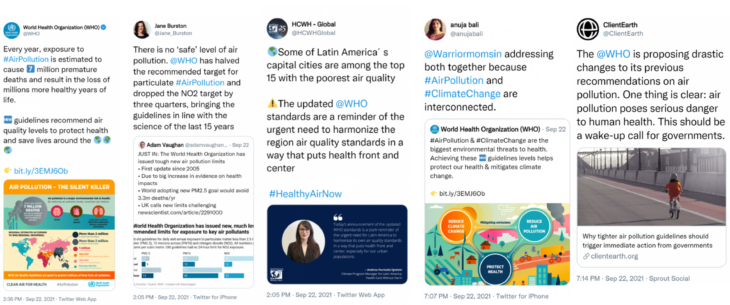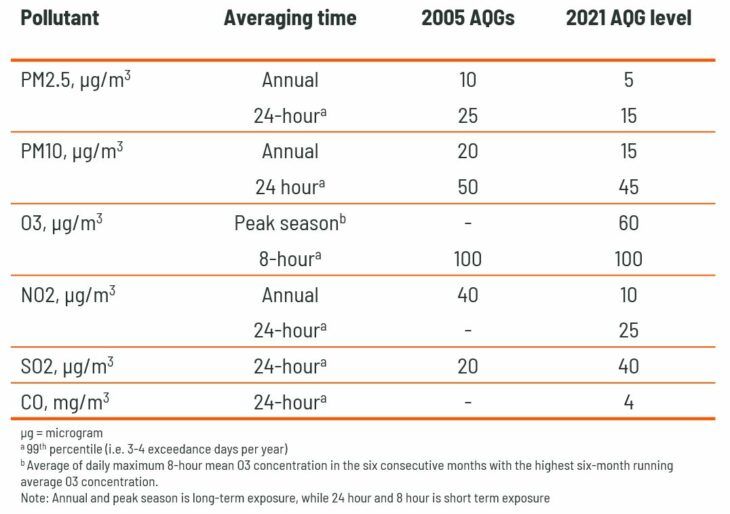The World Health Organization (WHO) has released updated Global Air Quality Guidelines that recommend new limits on air quality levels as well as set interim targets for six major pollutants and share good practices for managing pollutants such as black carbon.
The guidelines are based on evidence about the impact of air pollution on public health accumulated in the 16 years since the last global WHO Air Quality Guidelines were published.

At a press conference announcing the new guidelines, Dr Maria Neira, WHO’s Director of the Department of Public Health and the Environment, noted that 80% of the 7 million deaths attributed to air pollution could be avoided if current air pollution levels were reduced in line with the new guidelines. This would save 5-6 million early deaths. Read the 2021 WHO Air Quality Guidelines.
The WHO announcement comes just weeks ahead of the COP26 negotiations in Glasgow and sparked calls for decision makers to step up their efforts for clean to protect people’s health and address climate change.
Jane Burston, Clean Air Fund’s Executive Director said: “The WHO has shown leadership by setting ambitious new guidelines and explaining why they are so important for protecting health.”
“It’s extremely welcome that decision-makers are starting to recognise that reducing air pollution can help us tackle a number of our biggest challenges, from public health to climate change and inequality. There has been a real shift in the global conversation around air pollution recently.”
The Clean Air Fund calls on governments to make WHO air quality guidelines legally binding targets and create and implement national action plans to meet those targets.
It also urges development agencies and international finance institutions to work with developing countries to help them meet the new WHO guidelines. The State of Global Air Quality Funding 2021, published earlier this month, showed that less than 1% of overseas assistance is currently spent on tackling air pollution, far less than it should be given the high death and illness rates it causes.
Updated WHO Air Quality levels
Compared to the WHO’s 2005 global report, the new guidelines cut the recommended annual mean concentrations for particulate matter (PM2.5) in half and slash the respective level for nitrogen dioxide (N02) by three quarters. Both pollutants are caused by burning fossil fuels – from coal-fired power plants through to diesel vehicles and agricultural burning.
WHO Recommended 2021 Air Quality Guideline levels compared to 2005 guidelines:
